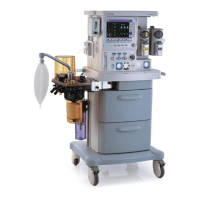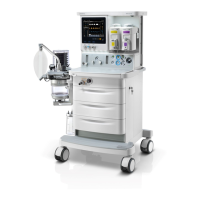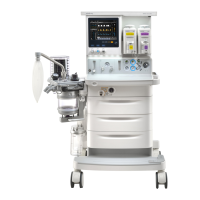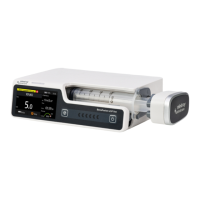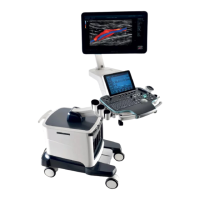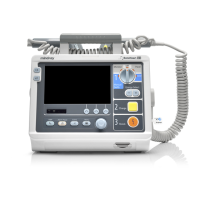D - 3
D.1.7 NIBP Physiological Alarm Messages
D.1.8 IBP Physiological Alarm Messages
D.1.9 CO
2
Physiological Alarm Messages
D.1.10 AG Physiological Alarm Messages
D.1.11 EWS Physiological Alarm Messages
1. N represents a number.
2. XX represents RR, SpO2, Temp, BP-S, BP-D, BP-M, HR, EtCO2, FiO
2
.
Alarm message Default priority Cause and solution
NIBP-S Extremely High/
NIBP-D Extremely High/
NIBP-M Extremely High
High The NIBP value is higher than the NIBP Extreme alarm high limit. Check
the patient’s condition and check if the alarm limit settings are correct.
NIBP-S/NIBP-D/NIBP-M
Extremely Low
High The NIBP value is lower than the NIBP Extreme alarm low limit. Check
the patient’s condition and check if the alarm limit settings are correct.
Alarm message Default priority Cause and solution
Art-S Extremely High/
Art-D Extremely High/
Art-M Extremely High
High The Art value is higher than the Art Extreme alarm high limit. Check the
patient’s condition and check if the alarm limit settings are correct.
Art-S Extremely Low/
Art-D Extremely Low/
Art-M Extremely Low
High The Art value is lower than the Art Extreme alarm low limit. Check the
patient’s condition and check if the alarm limit settings are correct.
Alarm message Default priority Cause and solution
FiO2 Shortage High FiO
2
concentration is less than18%. Check the patient’s condition, the
ventilated O
2
content and the CO
2
connection.
Alarm message Default priority Cause and solution
FiO2 Shortage High Check the patient’s condition, the ventilated O
2
content and the AG
connections.
Mixed Agent and MAC≥3 Med The mixed anaesthetic gases concentration is too high. Adjust the
anaesthetic gases concentration.
Apnea High The respiration signal was so weak that the monitor cannot perform
respiration analysis. Check the patient’s condition, module and patient
connections.
Alarm message Default priority Cause and solution
EWS Score> N
1
High/Med The total score exceeds the configured alarm limit. Check the patient
condition.
XX score is 3 Med The parameter score is 3. Check the patient condition.

